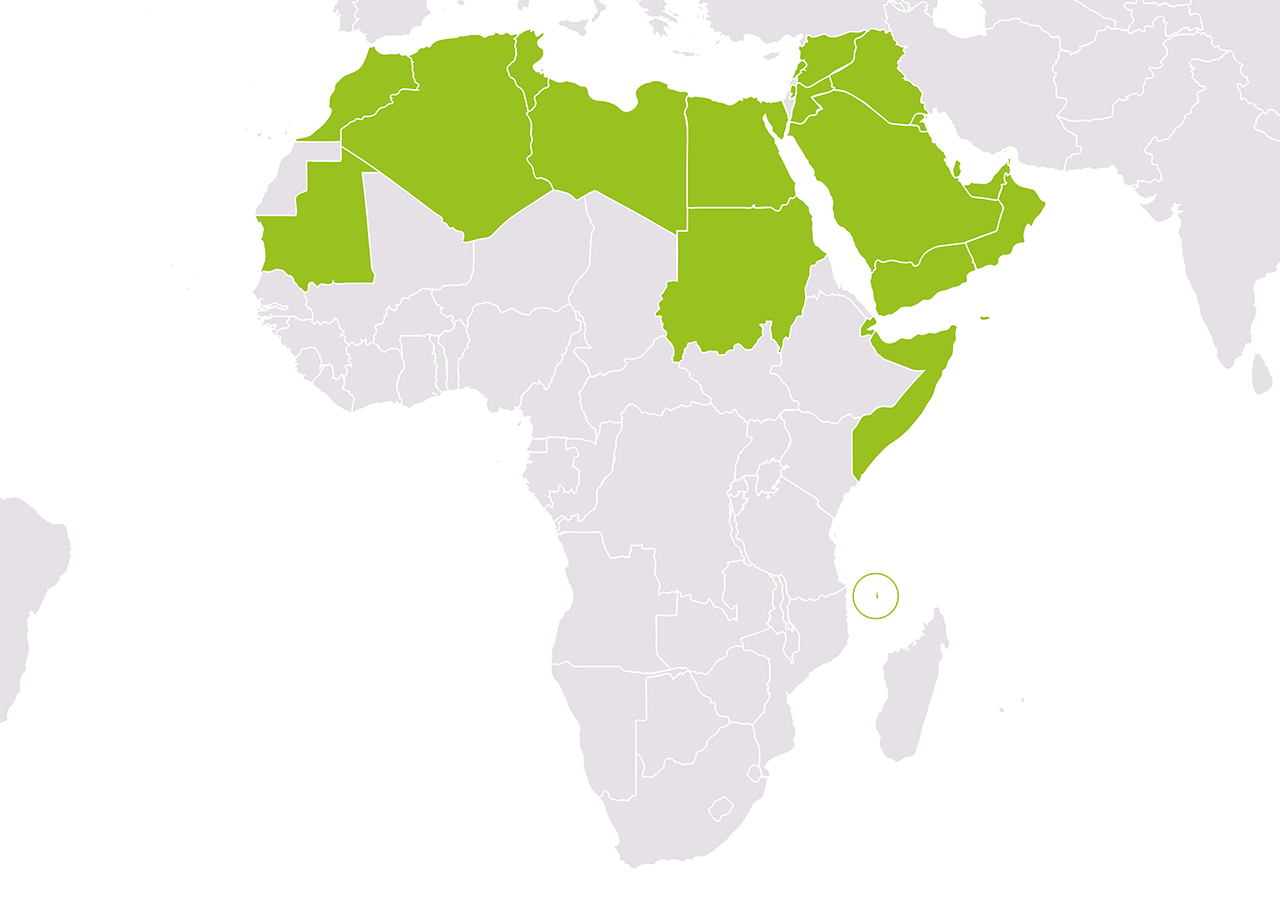Why Arabic is not a culture
Simply having an Arabic language version of your website doesn’t enable you to target the Middle East. Why? Because people from countries such as Iran or Turkey are not Arabs and don’t speak Arabic. Not all Arabic speakers are Muslims and not all Arabs are Muslims. In fact, the largest Muslim country is Indonesia and its 225 million people are not literate in Modern Standard Arabic (MSA). Arabic is best seen as a language, not a culture and unless you make an effort to avoid clichés and misconception, your digital strategy targeting the countries of the Arab world could be a real flop.
Arabic is the fastest-growing language of the Internet
Today it is the 4th most used language on the Web, with an unbelievable increase of 8000% over the last 8 years. It is one of 6 official languages of the UN and is spoken in 22 countries as an official language by more than 420 million people.
So where to start?
All businesses should consider dialects and local markets, not only Modern Standard Arabic, and be sensitive to the nuances within different industries. Arabic is a particularly complex language spoken and written throughout the Arab World but with a few key insights, myths can be busted, giving brands a better chance to become relevant.
A Semitic language
The written form of the Arabic language originated from the Aramaic script, itself based on the Phoenician script which gave birth to Greek, Maltese and Hebrew. It emerged in its current form between the 1st and the 4th century in Iraq or Saudi Arabia, depending on the source.
The written form of Modern Standard Arabic is the current written form of Arabic in the Arab World. It is composed of an alphabet like the Roman one and counts 28 letters. So why does it appear so much more artistic and confusing for non-readers? Because each letter has 4 forms (isolated – start – middle and end) which gives a total of 112 possibilities!
Arabic has influenced lots of languages. Amongst others, the English words sugar, cotton, magazine and alcohol are rooted in Arabic, something not many British people may know.
The breadth of influence is shown in Arabic numbers, famously known to be the origin of our Western numbers but which draw their origin in India (Brahmi script).
A pluricentric language and its challenges
A pluricentric language is a language that can take different written or spoken forms depending on the group of people it’s used by. And yes, English is a pluricentric language too! The difficulty in Arabic is that many varieties of spoken Arabic (dialects) are spoken all over the Arab World. As with English, the same alphabet is used but the terms and accents can be different. This represents a challenge for voice search.
Egyptian Arabic is widely understood because of the many popular TV series produced and broadcasted everywhere in this variant.
Some Roman alphabet letters don’t exist in Modern Arabic script. Don’t allow your brand to be mistranslated by forgetting to consider the absence of P or G in the Arabic alphabet. Although ‘Google’ is now too familiar to be mispronounced, even by Arabic speakers, it gave birth to different ways of writing it in Arabic, from Koogle to Joogle. It’s always a challenge, linguistically and culturally, to adapt a brand to the Arabic speaking market. To avoid causing offence, brands need to be culturally sensitive.
If a brand is not quick enough to localise itself, then influencers and customers will do the job for you, and here you might run the risk of your brand name becoming misinterpreted. The brand “Babyliss”, which is popular in Arab countries, did not localise itself in the market and is therefore pronounced incorrectly, referred to as “Baby lees”, something that will be hard to change now.
Arabic language today and its place on the internet
The 420 million Arabic speakers worldwide come predominantly from the 22 countries of the “Arab World”. This is the only collective term that is not considered politically or culturally sensitive so it’s best to use this instead of the acronyms and other terms which are often misused – such MENA, WANA, Arab League, Greater Middle East etc.

The 22 Arabic speaking countries of the Arab World – source: Wikipedia
An example of an industry to target carefully: Information Technology (IT)
Within IT, English is not a lingua franca for Arabic speakers who tend to prefer mixed terms coupled with local dialect or ‘arabising’ the English terms into the local dialect in spoken communication. For example, in Egypt, a flash memory card is called “flasha“- now an Egyptian word. However, Modern Standard Arabic is preferred for written communication when localising IT-focused websites.
UX implications
Arabic is one of the most difficult languages to design for digitally as it reads right-to-left, so the entire web page needs to be flipped horizontally.
All images should be reviewed for cultural sensitivity, and it’s not advisable to use the same images for both the Arabic and English version as horizontally flipping images will lead to some odd-looking results.
Search opportunities
In Paid Media or SEO (Search Engine Optimisation) campaigns, dialects should always be considered in keyword research and copywriting as a minimum.
However, the approach you take will depend upon:
-
- The type of product/service: if you want to use a casual tone (for a soft drink brand for example), then you can go with the spoken local dialect. But in sectors such as banking or medicine, it’s more appropriate to use MSA.
- The target audience: for example, whether you’re targeting only Egyptians or Arabs in general.
Most offline local adverts are in the local dialect, but when a brand wants to have one advert covering the whole Arab World, it’s better to go with Modern Standard Arabic.
When targeting an Arabic speaking country, on-the-ground cultural expertise remains key and drawing upon the knowledge of a genuine Local In-Market Expert (LIME) will make your digital strategy relevant and efficient. Oban’s LIME network is designed to help brands tap into the cultural insight that makes the difference between success and failure.
 Damien Robert | Senior International Resource Manager, Oban International
Damien Robert | Senior International Resource Manager, Oban International
Oban International is the digital marketing agency specialising in international expansion. Our LIME (Local In-Market Expert) Network provides up to date cultural input and insights from over 80 markets around the world, helping clients realise the best marketing opportunities and avoid the costliest mistakes.